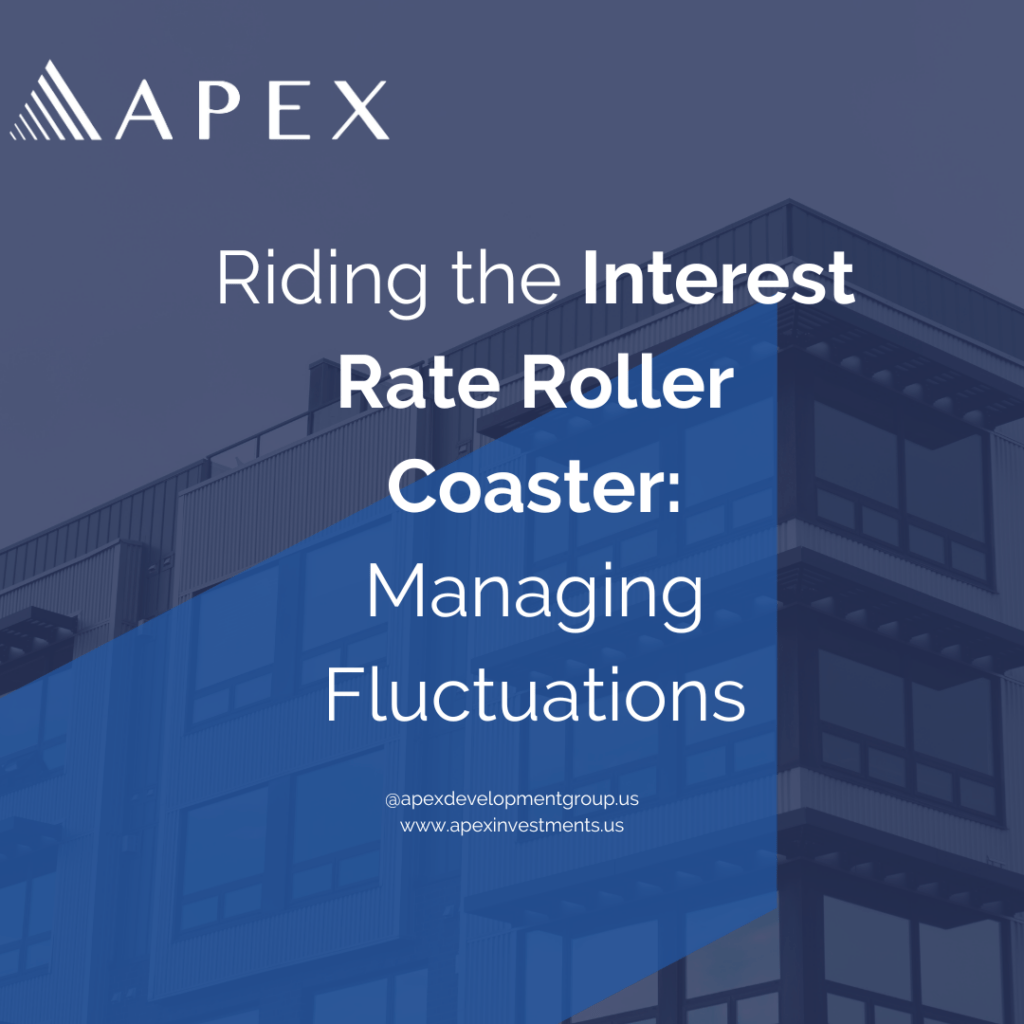
Interest Rate Roller Coaster: Managing Fluctuations
Interest Rates could be explained as the cost of borrowing money in an economy. In an organized economy, central banks are the entities in charge of setting interest rates. Some times interest rate fluctuations serve as a mechanism to control variables such as inflation; in times of high inflation there is a high volume of cash circulating, to diminish this volume ergo inflation is via interest rate hikes. Higher borrowing costs disincentivize loan originations and incentivize reallocation of cash into saving accounts, certificates of deposit and other financial instruments which will eventually lead to a lower volume of circulating cash and lower inflation.
What exactly does the Fed do?
The Federal Reserve, frequently referred to as the FED, is the entity in charge of setting interest rates in the US. Their main function is to raise or lower interest rates so that yearly inflation is as close to 2% as possible. The 2% mark is known as Target Inflation and is widely regarded as an indicator of an economy that is growing at a healthy pace.
How Fed rate hikes affect real estate?
Commercial Real Estate is a highly leveraged industry. Traditionally, a considerable portion of the capital stack of multifamily projects comes from commercial banks, federal agencies, or private lenders. To meet the market demand for money, these players also leverage their money lending operations and charge a spread to borrowers to generate profits. Therefore, as Interest Rates Rise the cost of leveraging multifamily operations will also rise.
What happens to investment if interest rate increases?
As an investor, you may have concerns about the potential risks associated with real estate investments during periods of rising interest rates. However, professional multifamily investment firms take proactive measures to mitigate these risks and safeguard your profitability.
Cap rate hedging
One such strategy is entering into rate cap agreements with banks or financial institutions, effectively hedging against any potential increases in interest rates. This rate cap acts as a form of insurance, protecting you from higher borrowing costs and ensuring that your investment remains secure and profitable even in fluctuating market conditions. With these risk management strategies in place, you can have confidence in the stability and resilience of your real estate investments, making them a viable and attractive option for long-term financial growth.
To illustrate how a rate cap works, assume that in 06/11/2023 you borrowed $100 from bank A to leverage the acquisition of a multifamily project for a 36-month term. The loan agreement establishes an interest rate of 4.1% + SOFR. Which means that the loan has a variable interest rate, and its value is pegged to the SOFR (a widely used benchmark rate for this type of loans), meaning your monthly interest rate will vary depending on the SOFR rate at calculation date.
Additionally, assume that on the closing date you purchased a rate cap with bank B at a strike rate of 2.5% for $1.25 that will be in full force until the end of the loan. This means that if the SOFR is above 2.5%, bank B will reimburse you a 100% of the additional interests that you paid for the difference between the SOFR rate at the calculation date and 2.5%.
Moreover, assume 07/11/2023 as the calculation date for monthly interests. As of calculation date, the SOFR sits at 5.06760%.
Interests Owed to Bank A = (Principal Balance * (margin rate + SOFR))/ 12
Hence,
Interests Owed to Bank A = ($100*(4.1%+5.06760%))/12 = $0.7640
Since your cap agreement is active, you are entitled to a reimbursement from Bank B, calculated as follows.
Reimbursement from Bank B = (Principal Balance*(SOFR Rate – Strike Rate))/12
Hence,
Reimbursement from Bank B = (100*(5.06760% – 2.5%))/12 = $0.214
After doing some research you concluded that the average SOFR value for the next 6 months will be close to 5.35%. With this information, you try to estimate your saving for the same period.
Estimated 6 months Reimbursement from Bank B = (100*(5% – 2.5%))/2 = $1.25
This estimate allows you to draw three conclusions:
- Your 6 months savings will likely offset the purchase price of the rate cap.
- You will still have 30 months of interest payments that are hedged. Consequently, now that you have covered the purchase price, you can fully dispose of reimbursed cash going forward.
- Your effective rate will never be higher than (4.1% + 2.5%)
Fixed Rate
The second widely used option when hedging against interest rates fluctuations is to leverage new deals with fixed rate debt. If you want to learn more about fixed rates in Multifamily Real Estate, read this article:
Overall, partnering with a professional multifamily investment firm is a critical step for investors seeking to navigate the dynamic real estate market successfully. As we’ve discussed, rising interest rates can pose potential risks to real estate investments, affecting borrowing costs and overall profitability. However, by teaming up with an experienced and knowledgeable partner, such as APEX, you gain access to essential risk management strategies, like rate cap agreements, which act as a safeguard against interest rate fluctuations.
How does Apex Manage these fluctuations?
In the face of interest rate fluctuations, Apex has developed a comprehensive strategy to navigate the changing landscape and mitigate potential risks, employing a combination of proactive measures and strategic financial instruments. Apex ensures that its investments and operations remain resilient and well-positioned to adapt to changing interest rate environments, allowing you to focus on your investment goals with confidence and peace of mind. Here are some instruments we use in our day-to-day structing process:
- Apex conducts regular risk assessments to evaluate the potential impact of interest rate fluctuations on its investment portfolio and operations. By closely monitoring market trends and economic indicators, we can anticipate changes and implement appropriate measures in a timely manner.
- Apex leverages hedging instruments to protect projects against adverse interest rate movements. For example, we engage in rate cap agreements with banks or financial institutions, providing flexible structures to lock-in favorable interest rates or hedge against potential rate increases.
- Apex conducts rigorous scenario analysis and stress testing to assess the potential impact of extreme interest rate fluctuations on its portfolio. By simulating various market scenarios, Apex can identify vulnerabilities, measure potential losses, and refine its risk management strategies accordingly. This proactive approach helps Apex to be well-prepared and resilient in the face of significant interest rate movements.
- Apex maintains strong relationships with its lending partners, including commercial banks and financial institutions. These partnerships enable Apex to stay informed about the latest lending rates and negotiate favorable terms when securing financing for its projects.
- Apex maintains a dedicated research team that continuously monitors market trends, economic indicators, and regulatory developments related to interest rates. By staying well-informed and up-to-date, Apex can make informed investment decisions and adjust its strategies based on evolving market conditions.
Through a combination of these strategies, employing proactive measures, diversifying investments, utilizing hedging instruments, and staying informed about market trends, Apex is always managing effectively interest rate fluctuations, minimizing potential risks, and maximizing opportunities. We invite you to contact us to protect value for a better future.
